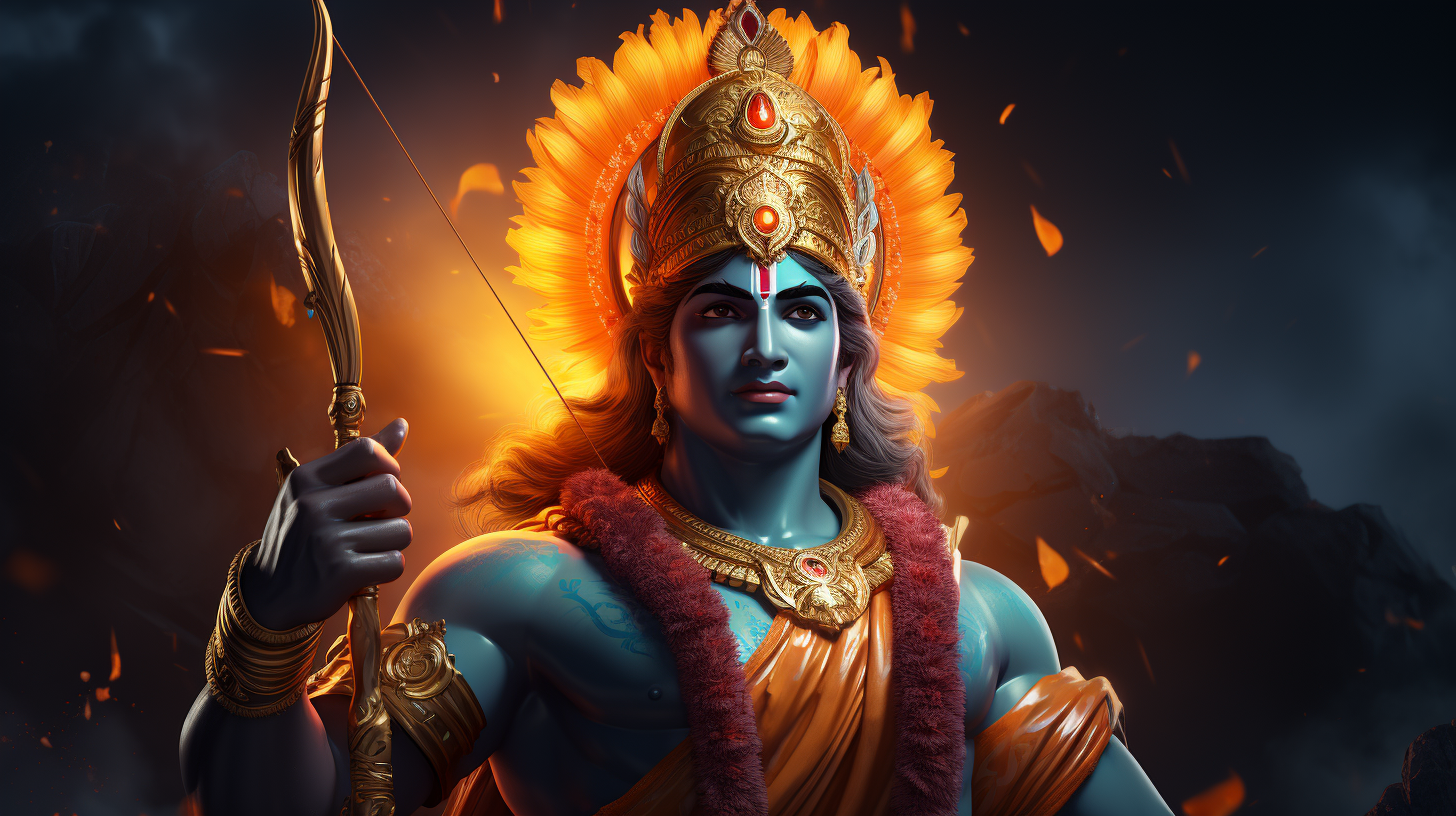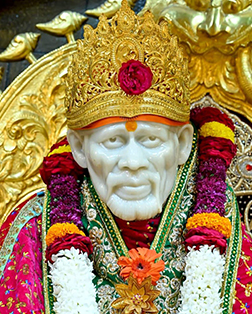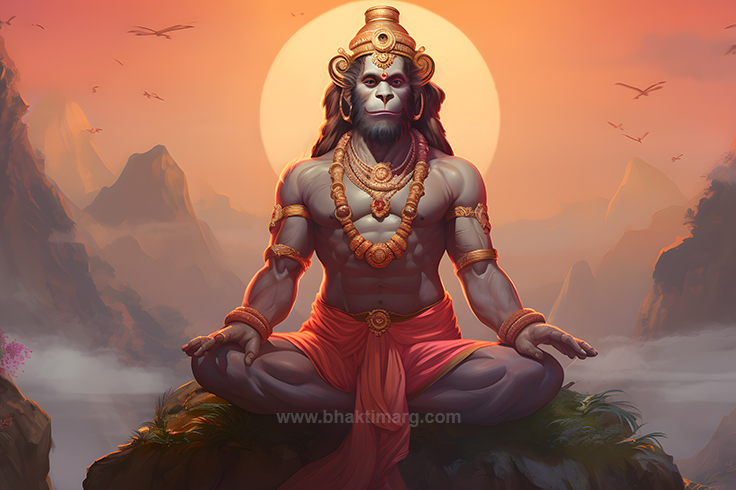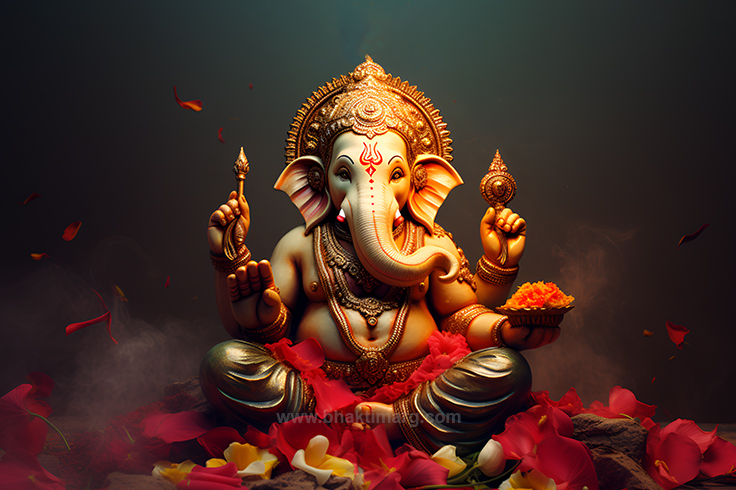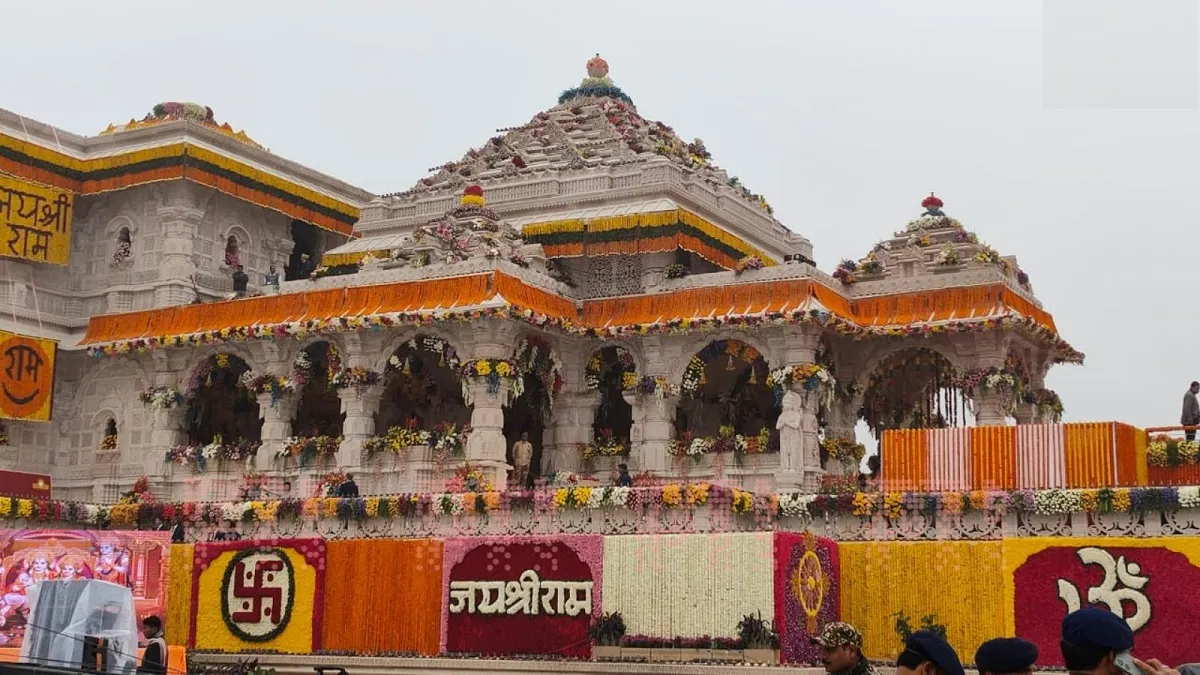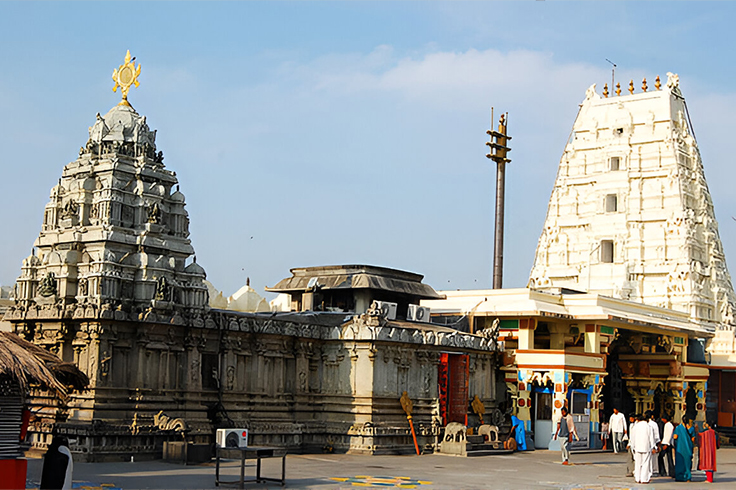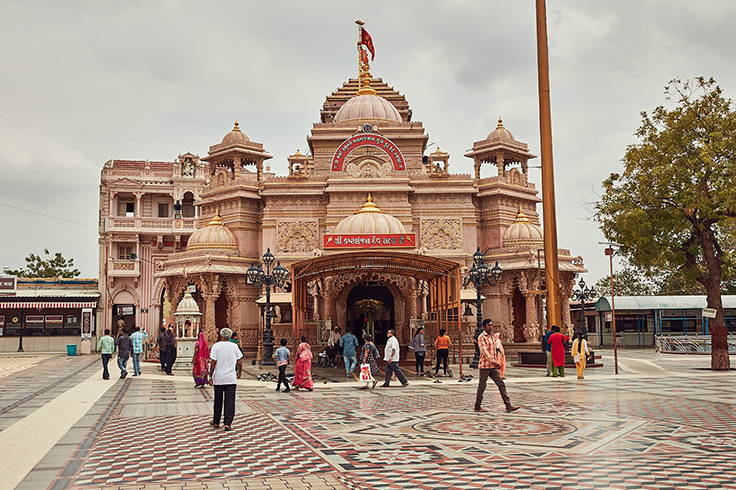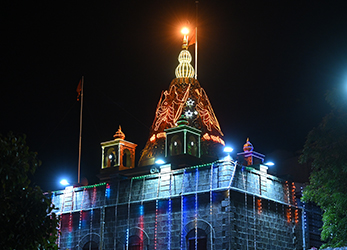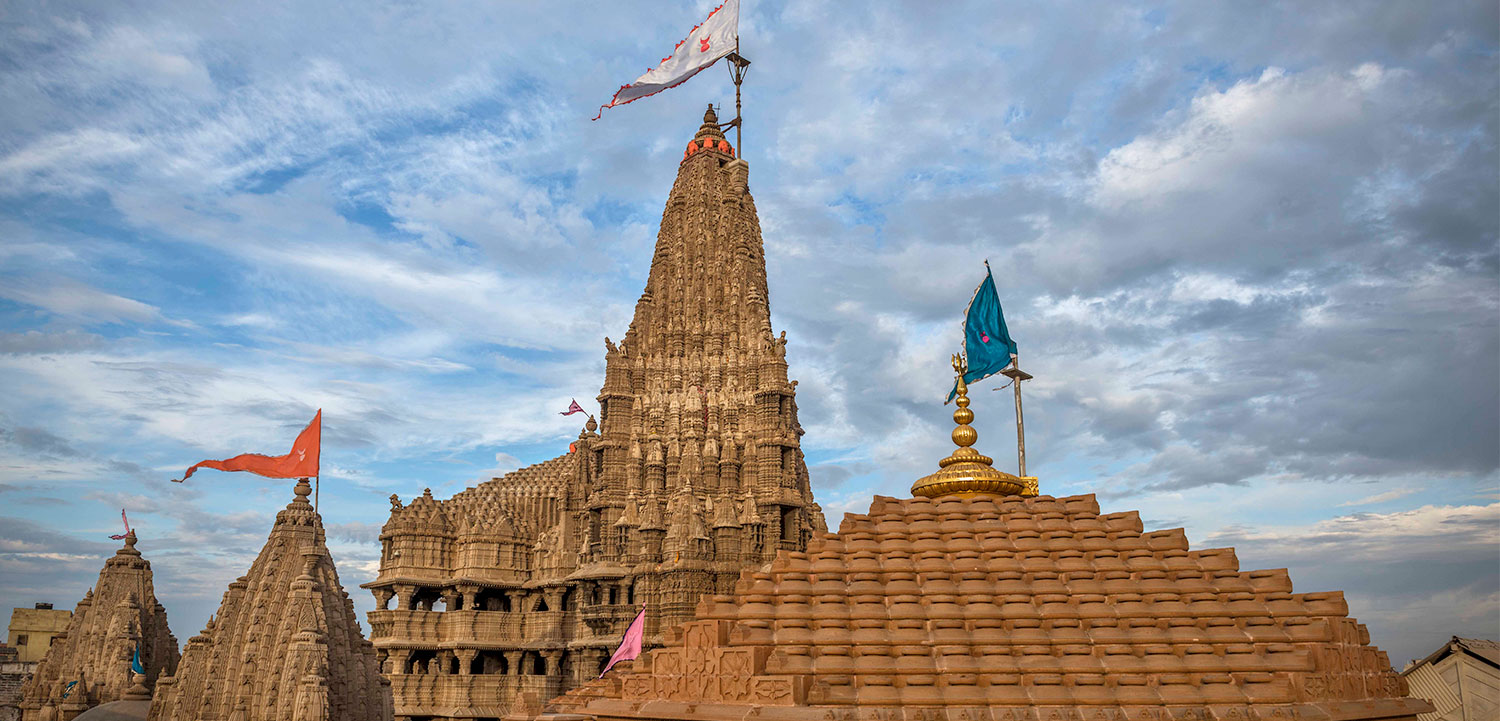Lord Dattatreya
The existence of Hinduism is considered long before the accounted era of human existence, many researchers have also claimed to find evidence of ancient Hindu scriptures and artifacts dating way back before AD. The existence of Lord Dattatreya can be accounted for in those far eras of humanity, he is revered as a unique deity embodying the divine trinity of Brahma, Vishnu, and Shiva. Bhagwan Dattatreya, also known as the Trimurti, represents the cosmic functions of creation, preservation, and destruction.
Shri Dattatreya Swamy is celebrated for his teachings and role as a wandering ascetic, embodying the principles of renunciation and spiritual wisdom. The Shri Guru Charitra is one of the books that portrays his philosophical contributions and ideologies. Other texts like the Avadhuta Gita and Jivanmukta Gita, emphasize self-realization and the ultimate truth beyond dualities encapsulating about Dattatreya’s philosophies.
As a deity who transcends sectarian boundaries, Dattatreya is venerated by followers of diverse spiritual traditions across India, symbolizing the harmonious integration of various paths to the divine, Let’s know more about it in detail.
The Mythological Beliefs and Origin Story of Datta God
It is believed that Shree Gurudev Datta Avatar existed eternally for thousands of years before AD. According to Hindu scripture dattatreya swamy history dates back to Satayuga even before Lord Rama or Lord Krishna descended on earth in human form. He is revered as Parabrahma in texts like Bhagavata Puran, Markandeya Puran, and Brahmand Puran him being the incarnation of the supreme Trinity.
Dattatreya’s story begins with the sage Atri one of the seven great sages or Saptarishis, and his devoted wife, Anasuya who were renowned for their piety and asceticism. Even though there are various angles to the Datta janma katha, his parents and existence as the avatar of the Trinity are common. His name, “Datta,” means “given” and “Atreya” signifies “the son of Atri,” highlighting his divine origin and parental lineage. From Suta Samhita, one can know that Datta Avatara first occurred in Krta Yuga (Satyug) and is said to be born on vaishakha bahula Dashami – Thursday – Revati Nakshatra mina lagna.

The varied stories include one where Rishi Atri and Anusaya longed for a child hence Atri performed severe penance, invoking the blessings of Brahma, Vishnu, and Shiva. And they were granted with a divine chile Dattatreya who would embody the qualities of the supreme trinity—creation, preservation, and destruction.
Another legend of Dattatreya’s birth is both fascinating and symbolic, according to the Puranic texts, Saraswati, Lakshmi, and Parvati, the consorts of Brahma, Vishnu, and Shiva respectively, were envious of Anasuya’s virtue. Even the Tridev would praise Anasuya’s unparalleled devotion and chastity, so they sent their husbands to test her fidelity. Disguised as sages, the trinity approached Anasuya and asked for alms, pre-conditioning that she should serve them unclothed. Composed of unshakable faith, Anasuya transformed them into infants using her spiritual powers and fed them with maternal love. This act dissolved their test and revealed their true identities. As a reward for her unwavering devotion and purity, the trinity merged into a single child—Dattatreya.
The third legend states that he was born to an unwed mother Anasuya along with his brothers Durvasa and Chandra. The fourth states that Anasuya gave birth to Dattaguru in a hermitage at Mahur fathered by Rishi Atri credited for his contribution to Rigveda, a fifth one states he was born in Kashmir Jungle near Amarnath.
About Dattatreya’s Appearance
Lord Dattatreya is an avatar of Tridev and is depicted with three heads and six hands, symbolizing his triune nature. Each head represents Brahma, Vishnu, and Shiva, while his hands typically hold symbolic items associated with these deities: a rosary (akshamala) and a water pot (kamandalu) symbolizing Brahma, a conch (shankha) and discus (chakra) representing Vishnu, and a trident (trishula) and drum (damaru) signifying Shiva.
Gurudev Dattatreya is accompanied by four dogs, which represent the four Vedas, and a cow, symbolizing the earth and Dharma, he is an embodiment of knowledge, power, and compassion. It is said that lord Dattatreya possesses all three qualities that are sattva, raja, and Tama, hence is called ‘Three-fold Trinity Sridatta’. Guru is the one who realizes the Brahman principle which is nirguna and formless. The Guru of such a Guru is Sridatta Guru, Shree Gurudev Datta has been conferred the Guruship of the entire universe.
Who is Lord Dattatreya? Exploring His Spiritual Significance
The history of Dattatreya as mentioned in the scriptures clarifies that he is not just a deity but also a great teacher and philosopher. His teachings, captured in texts like the Avadhuta Gita and Jivanmukta Gita, focus on the principles of Advaita (non-duality) and the realization of the self beyond all worldly attachments. Datta God is said to have left his home at an early age for Tapasya so he is denoted as an ascetic and wandering monk, he embodies the virtues of renunciation, wisdom, and spiritual freedom.
Venerated by diverse spiritual traditions, Dattatreya transcends sectarian boundaries, symbolizing the harmonious integration of various paths to the divine. His life and teachings continue to inspire countless devotees on their spiritual journey. They can also be called a sub sect of Sridatta Sampradaya. In all these traditions Shree Gurudev Datta is the main deity, worshiping deity, Sadgururupa, Siddhidata, Ashtanga yoga guide. Sri Dattatreya Avatar is the indicator of the three states of origin, state, and rhythm.
Worship of Gurudev Dattatreya
Worship of the Datta God is prevalent across various regions in India, particularly in Maharashtra, Gujarat, Karnataka, Andhra Pradesh, and Telangana. The followers of Datta Guru are accounted in Nath Sampradaya, in Shaivism they refer to him as the first guru, Adinath and most traditions and scholars consider Adi Nath to be the epithet of Shiva. In Vaishnavism, it is said to be described in the Mahabharat that Shree Datta Guru was an exceptional guru and an avatar of Vishnu in Purana. Old beliefs claim he had renounced the world at an early age to lead a monastic life the Tripura Rahasya refers to a disciple of Parsurama finding Datta God meditating in Gandhamadana mountain in Tamil Nadu as well. He is also a revered lord in Jainism and it is said from his wandering young Dattatreya has left his footprints at Girnar.
Some refer to Dattatreya not simply as the traditional guru of the Nath Sampradaya but instead was co-opted by the Nath tradition in about the 18th century as a guru, as a part of Vishnu-Shiva syncretism, which is evidenced by the Marathi text Navanathabhaktisara. There is a syncretic fusion of the Nath Sampradaya with the Mahanubhava sect by identifying nine Naths with nine Narayanas. So the devotees of Lord Dattatreya belong to the wide sect and the ones following Guru Parampara, or Nath Sampraday have in one form or other devoted themself to him.
While worshiping Lord Dattatreya devotees often offer prayers, perform rituals, and chant mantras like the Lord Dattatreya Mantra to seek his blessings for wisdom, health, and spiritual growth. Daily worship typically includes offerings of flowers, incense, and food, alongside the recitation of sacred texts such as the Avadhuta Gita and the Shree Guru Charitra which narrate the life and teachings of Dattatreya. Thursday is considered an auspicious day for his worship, and many devotees observe fasts and special prayers on this day.
![]()

Festival and Pilgrimage Bhagwan Dattatreya
The most significant festival associated with the lord is Datta Jayanti, which celebrates his birth and is observed on the full moon day (Purnima) of the Margashirsha month in the Hindu calendar, which usually falls in December. On Datta Jayanti, devotees gather in Shri Dattatreya Swamy temples to participate in elaborate rituals and ceremonies that begin with a holy bath (Abhishekam) of the deity’s idol, followed by the adornment of the idol with new clothes and jewelry. Devotees sing Dattatreya aarti, Datta bhajan, Datta guru bhakti geet, and recite the Shri Dattatreya Stotram or Upanishad and other sacred texts. Apart from Datta Jayanti, Lord Dattatreya is also venerated during Guru Purnima, a festival dedicated to honoring one’s spiritual teachers or gurus.
There are sacred Pilgrimages to sites holding significance to Lord Dattatreya, such as the Shri Kshetra Ganagapur in Karnataka, the Girnar mountain in Gujarat, Datta birth Temple in Pithapur, and the Mahur temple in Maharashtra, and they attract thousands of devotees, especially during festivals, seeking the blessings and divine presence of Shri Dattatreya Swamy.
Also Check: Different Incarnations of Lord Dattatreya
Avatars of Dattatreya
Lord Dattatreya is an incarnation of the Hindu trinity and is manifested in sixteen distinct forms, each embodying unique aspects of divine wisdom and guidance. These 16 avatars of Dattatreya collectively known as the Shodasha (sixteen) Avatars, are significant in Hindu spirituality and mythology, they are as follows,
‘Yogiraj’, the master of yoga, emphasizes spiritual discipline, ‘Atrivarad’ bestower of boons, fulfilling the desires of devotees, ‘Dattatreya’, the primary form, embodying the essence of the Trimurti, ‘Kaalaagnishaman’, the one who extinguishes the fire of time, symbolizing eternal peace, ‘Krishna-shyaam-kamalanayan’ the dark-skinned Dattatreya incarnation with lotus eyes, reflecting beauty and compassion, ‘Lilavishambhar’, engaged in divine play, representing the joyful aspect of divinity, ‘Siddhatraya’ the perfect master, the epitome of spiritual accomplishment, ‘Vishambharavatraya’, sustainer of the universe, ensuring balance and harmony, ‘Avadhoot Chintopasak’ the ascetic who is beyond worldly concerns, ‘Maaya Muktanand’ liberated and free from the illusions. ‘Maayaamukt’ is the remover of delusion, guiding devotees to enlightenment, ‘Adiguru’ is the primordial teacher, then ‘Shripad Shrivallabh’, the first complete incarnation, ‘Narasimha Saraswati’ a renowned sage, ‘Swami Samarth’ A mystic known for his miraculous powers, and ‘Manik Prabhu’ a revered saint blending spiritual wisdom with social service.
These 16 avatars of Dattatreya collectively illustrate the multifaceted nature of divinity, guiding devotees through various aspects of spiritual growth, discipline, and ultimate liberation.



